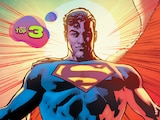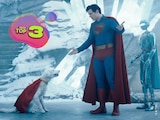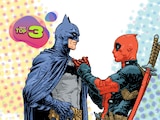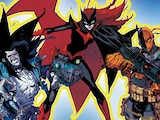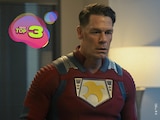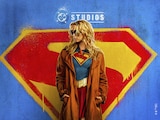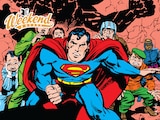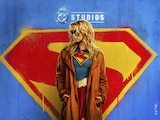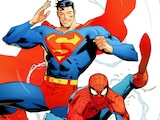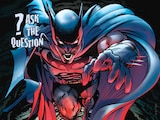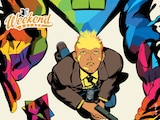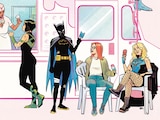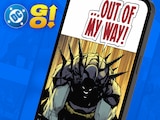As we celebrate Black History Month, it’s the perfect time to spotlight some important moments that helped bring some greater diversity to the DC Universe, from groundbreaking Black characters who have become icons, to the talented and diverse creators who broke down racial barriers. For example, did you know DC’s first Black creator contributed to the company’s first comic? Did you know that Cyborg was DC’s first Black hero to lead a superteam? Or that the first two Black women to write for DC both have extraordinary Hollywood credentials? Let’s look at seven important milestones in DC’s own Black history that helped make the company what it is today.

1935: Adolphe Barreaux Helps DC Launch Its First Title
Before Superman, Batman and Wonder Woman, the DC Universe began in 1935 with New Fun Comics #1. The anthology series featured a variety of short stories from different writers and artists, including “The Magic Crystal of History.” This feature was about two children named Bobby and Binks who find a magical crystal ball that transports them through time. The strip was written and penciled by Adolphe Barreaux, and according to the book Invisible Men: The Trailblazing Black Artists of Comic Books, Barreaux (who was mixed race and had a lighter skin tone) hid his race in order to escape prejudice.
Barreaux’s contribution to New Fun Comics #1 might be a single page, but it’s significant. It means that a Black writer and artist participated in the first comic DC ever published. During his lifetime Barreaux was forced to hide his race, but today we can celebrate him as DC’s first Black creator.

1945: Ralph Jackson, DC’s First Black Hero
During the 1940s, it was rare to see African American characters in comics, and when they did appear they were usually depicted as racist caricatures. That’s one of the reasons Ralph Jackson was so significant. Ralph wasn’t a caricature, a cook, or a criminal. Sgt. Ralph Jackson was a war hero, fighting Nazis for the Allied Forces. Ralph appeared in 1945’s World’s Finest #17 as part of the “Johnny Everyman” feature. “Johnny Everyman” was a feature that focused on positive messaging, such as be good to your community and don’t be racist.
Sgt. Ralph Jackson was the focus of one “Johnny Everyman” story, which sought to educate readers on the Black soldiers fighting during World War II. After shooting down Nazi planes, Ralph wants to celebrate by dining out, but he’s refused service at multiple restaurants due to the color of his skin. This frustrates Ralph, who feels demoralized fighting for a country that sees him as a second-class citizen. These types of stories were not typically seen in a 1945 comic. Not only was Sgt. Ralph Jackson given a heroic role, but his story took an honest look at the racist treatment Black Americans were receiving.

1973: Nubia, DC’s First Black Female Superhero
1973’s Wonder Woman #204 brought Diana Prince back to her super-powered roots after four years as a powerless kung-fu artist in a white jumpsuit. However, the issue’s biggest legacy was the introduction of Nubia, which occurs in the last few pages of the story. After Diana reclaims her title as Wonder Woman, a stranger clad in full body armor approaches the Amazonian princess, challenging her for the title. The stranger beats Wonder Woman in combat but refuses to kill her.
Readers don’t learn that she’s a Black woman until she unmasks herself. In doing so, the iconic moment broke another racial barrier, introducing readers to DC’s first Black heroine. Nubia introduces herself as “Wonder Woman of the Floating Island” and she and Diana part as friends. The character would show up a few more times before fading into obscurity for a time. However, Nubia has enjoyed a comeback in recent years, thanks in large part to creators like L.L. McKinney, Stephanie Williams, Robyn Smith and Alitha Martinez, who have featured her in series like Nubia & the Amazons and graphic novels like Nubia: Real One.

1977: Black Lightning is DC’s First Ongoing Title Starring a Black Superhero
Usually a lightning strike could be considered a dangerous thing, but in 1977, it was one of the greatest things to ever happen for the DC Universe. Black Lightning #1 is not only significant for being the first appearance of Black Lightning, but it was also the first DC comic book to have an African American as the title character. The series followed the adventures of Jefferson Pierce, a former Olympic athlete who returns to his old neighborhood to become a teacher.
When he finds that gangs have infiltrated his old neighborhood, Jefferson suits up as Black Lightning to strike back. The slang in the issue might be dated, and the hero’s costume might look like a disco suit, but Black Lightning has stood the test of time, becoming one of the most important heroes in the DC Universe.

1989: Cyborg Becomes the First Black Character to Lead a DC Superhero Team
In 1989’s New Titans #59, Nightwing took a break from the Titans to focus on his personal issues. In his absence, he asked Cyborg to be team leader. Victor Stone was a natural choice. He had been a part of his iteration of the team since their debut in 1980’s DC Comics Presents #26. However, this moment is significant because it’s the first time a Black hero was the leader of superhero team in the DC Universe.
The comic doesn’t mention the historical nature of this moment, but Bumblebee would recount how groundbreaking it was in The Other History of the DC Universe #2: “He (Dick) offered the team leader position to Vic. It was a casual gesture, but a logical one. But it also made Victor the first person of color to lead a supergroup. At least a terrestrial one. I’m not even sure Dick knew he was being a Branch Rickey for the metahuman set by making his decision. It was better if he didn’t. What he did wasn’t a corrective measure. It was just the right call.”

1993: The Launch of Milestone Media
While the comic book industry of the early 1990s had a large segment of Black readers, very few of the titles were being produced by Black creators. In 1993, a coalition of Black writers and artists got together to change that. Derek D. Dingle, Michael Davis, Dwayne McDuffie and Denys Cowan launched Milestone Media, a company that finally gave Black readers a voice and Black creators a platform. DC acted as publisher for the imprint, but Milestone maintained complete creative control.
Milestone introduced memorable characters such as Static, Icon and Hardware—characters who were incorporated into the DC Universe years later. Today, the legacy of Milestone Media lives on with the publication of new comics updating their characters for today’s readers, as well as the Milestone Initiative, a 2022 program designed to find and train the next generation of Black creators.

2009: Felicia D. Henderson and Angela Robinson Become the First Black Women to Write for DC Comics
At first glance, Teen Titans #75 and The Web #1 might not seem different from the other comics on the stands in September 2009. What readers may not have realized at the time was that these were the first two DC comic books to be written by African American women. Teen Titans #75 marked the beginning of Felicia D. Henderson’s year-long run on the title. Prior to that, Henderson had an impressive body of television work, including developing Soul Food, which at the time was the longest running TV drama starring a Black cast.
The Web #1 was scripted by Angela Robinson, who is another well-established writer from the world of television. Robinson served as a producer, director and writer for The L Word, and also served as a writer/producer for True Blood and How to Get Away with Murder. An interesting note for DC fans, after The Web, Robinson would go on to write and direct Professor Martson and the Wonder Women, a biographical film based on the life of Wonder Woman creator William Moulton Marston.
These two women were the first, but they certainly wouldn’t be the last. (In fact, for more DC comics written by Black women, check out last week’s DC House of List-ery!)
These are just a few particularly noteworthy milestones, but if it wasn’t for these seven creators and characters, the DC Universe wouldn’t be what it is today. Let’s all take a moment to reflect on them and the barriers they broke down as we celebrate the final weeks of Black History Month.
Joshua Lapin-Bertone writes about TV, movies and comics for DC.com, is a regular contributor to the Couch Club and writes our monthly Batman column, "Gotham Gazette." Follow him on Twitter at @TBUJosh.
NOTE: The views and opinions expressed in this feature are solely those of Joshua Lapin-Bertone and do not necessarily reflect those of DC or Warner Bros. Discovery, nor should they be read as confirmation or denial of future DC plans.

